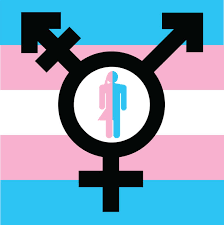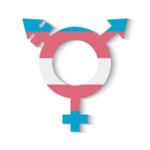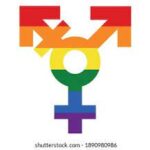Cross dressing, or the act of wearing clothing typically associated with the opposite gender, is a practice that has been around for centuries. While some engage in cross dressing for personal expression, creativity, or performance art, others experience a much darker reality known as "forced cross dressing." This phenomenon can occur in various contexts, from cultural traditions to abusive situations, and its implications are far-reaching. In this article, we will unpack what forced cross dressing entails, its historical roots, the psychological impact on individuals, and how society can better support those affected.
What is Cross Dressing Forced? A Quick Overview
Forced cross dressing refers to situations where individuals are compelled to dress in clothing associated with the opposite gender against their will. This coercion can arise from various circumstances, including cultural practices, familial expectations, or abusive relationships. Unlike voluntary cross dressing, which can be a form of self-expression, forced cross dressing often leaves individuals feeling stripped of their autonomy and identity. This can lead to complex feelings of shame, confusion, and resentment.What Is The Definition Of TranssexualSide Effects Of Estradiol Oral
The motivations behind forced cross dressing can vary widely. In some cases, it may stem from a desire to humiliate or control an individual, often seen in abusive or bullying situations. In other scenarios, it may be used as a means to reinforce traditional gender roles or societal norms in a misguided attempt to "teach a lesson." Regardless of the reasons, forced cross dressing is a violation of personal freedom and can have lasting negative effects on mental health.
The Historical Context of Forced Cross Dressing
Throughout history, forced cross dressing has appeared in various forms, often linked to power dynamics and social control. One notable example is the practice of using forced cross dressing in the military, where individuals may have been compelled to adopt the attire of the opposite gender as a means of punishment or humiliation. Similarly, during certain cultural rituals, individuals might have been coerced into cross dressing to fulfill specific roles that were deemed necessary by tradition.
In the realm of theater and performance, cross dressing has often been used for comedic or dramatic effect. However, it is essential to differentiate between voluntary cross dressing for artistic purposes and forced cross dressing, which can be deeply traumatic. As societies evolve, the implications of such historical practices shape present-day attitudes towards gender and identity, often complicating discussions around acceptance and understanding.
Why Some Cultures Embrace Cross Dressing Practices
In stark contrast to forced cross dressing, some cultures celebrate and embrace cross dressing as a form of artistic expression or spiritual practice. For instance, in many Indigenous cultures, gender fluidity and cross dressing are revered as a natural part of the human experience. These cultures often recognize multiple gender identities, allowing individuals to express themselves freely without fear of stigma.
Similarly, in the realm of performance arts, cross dressing has been a staple in many cultures, especially in theater and drag performances. These practices challenge traditional gender norms and encourage a more nuanced understanding of gender identity. Embracing cross dressing as a cultural practice can foster acceptance and promote diversity, allowing individuals to explore their identities in a supportive environment.
The Psychological Impact of Forced Cross Dressing
The psychological ramifications of forced cross dressing can be severe, leading to long-lasting trauma and emotional distress. Individuals who are coerced into cross dressing often experience feelings of humiliation, shame, and confusion about their identity. These experiences can result in anxiety, depression, and a fractured sense of self, making it challenging for individuals to navigate their lives post-experience.
Moreover, the lack of agency in such situations can lead to a deep mistrust of oneself and others. When individuals feel that their bodies and identities are controlled by external forces, it can create a psychological barrier that affects their ability to form healthy relationships. Therapy and support groups can provide vital resources for those recovering from the psychological impact of forced cross dressing, helping them reclaim their identities and autonomy.
Real-Life Stories: Experiences of Forced Cross Dressers
Many individuals have shared harrowing stories of their experiences with forced cross dressing. For some, it occurred within the context of abusive relationships, where a partner used coercion as a means of control. These individuals often recount feelings of helplessness and humiliation, as their autonomy was stripped away during these experiences. Some have found solace in sharing their stories, using their experiences as a platform to raise awareness about the dangers of such coercion.
Others have encountered forced cross dressing in familial settings, where strict gender norms dictated their behavior and appearance. These stories illustrate the often-painful struggle between personal identity and societal expectations. Many individuals express a desire to break free from these confines and embrace their true selves, highlighting the urgent need for greater understanding and acceptance of diverse identities.
Legal and Ethical Implications of Forced Cross Dressing
Forced cross dressing raises significant legal and ethical questions, particularly concerning individual rights and consent. In many jurisdictions, coercive practices that infringe on personal freedom can be categorized as forms of abuse, and victims may have legal recourse to seek justice. However, the challenge lies in raising awareness about these issues and ensuring that victims feel safe coming forward.
From an ethical standpoint, forced cross dressing epitomizes a serious violation of personal autonomy. Society must grapple with the ethical implications of coercing individuals into roles that do not reflect their true selves. Advocating for an understanding of consent—both in personal relationships and broader societal norms—is crucial to preventing forced cross dressing and fostering a culture of respect for individual identity.
How to Support Those Affected by Forced Cross Dressing
Supporting individuals affected by forced cross dressing requires a compassionate and informed approach. It is essential to listen to their experiences without judgment, validating their feelings and acknowledging the trauma they may have endured. Creating safe spaces for individuals to share their stories can be instrumental in their healing process, helping them feel less isolated in their experiences.
Additionally, resources such as counseling and support groups can offer vital assistance for those navigating the aftermath of forced cross dressing. Educating oneself about the complexities of gender identity and the implications of coercive practices can also empower allies to advocate for those affected. Ultimately, fostering a culture of empathy and understanding is key to supporting individuals in reclaiming their identities.
Moving Forward: Advocating for Acceptance and Understanding
As society progresses, it is essential to advocate for greater acceptance and understanding of diverse gender identities and expressions. This includes recognizing the harmful nature of forced cross dressing and actively working to dismantle the systems that perpetuate such practices. Education plays a vital role in this advocacy, as increased awareness can lead to more inclusive policies and practices.
Engaging with communities and supporting organizations that promote gender equality and acceptance can help create a more inclusive society. By amplifying the voices of those affected by forced cross dressing and fostering open dialogue about gender identity, we can work towards a future where everyone is free to express themselves without fear of coercion or judgment.
Forced cross dressing is a complex issue that intersects with history, culture, and personal identity. It is vital to understand the differences between voluntary and forced practices and the various implications they carry. By fostering awareness, compassion, and advocacy, we can create a more accepting environment for individuals of all gender identities. Supporting those affected and challenging harmful practices can lead to a future where everyone is free to express their authentic selves, paving the way for greater understanding and acceptance across society.


